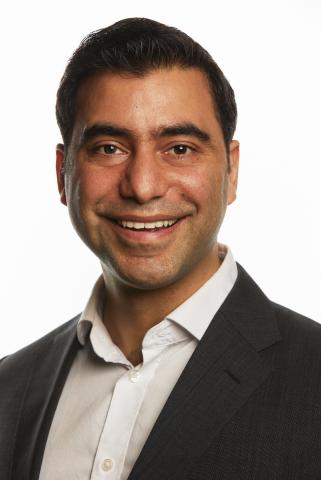
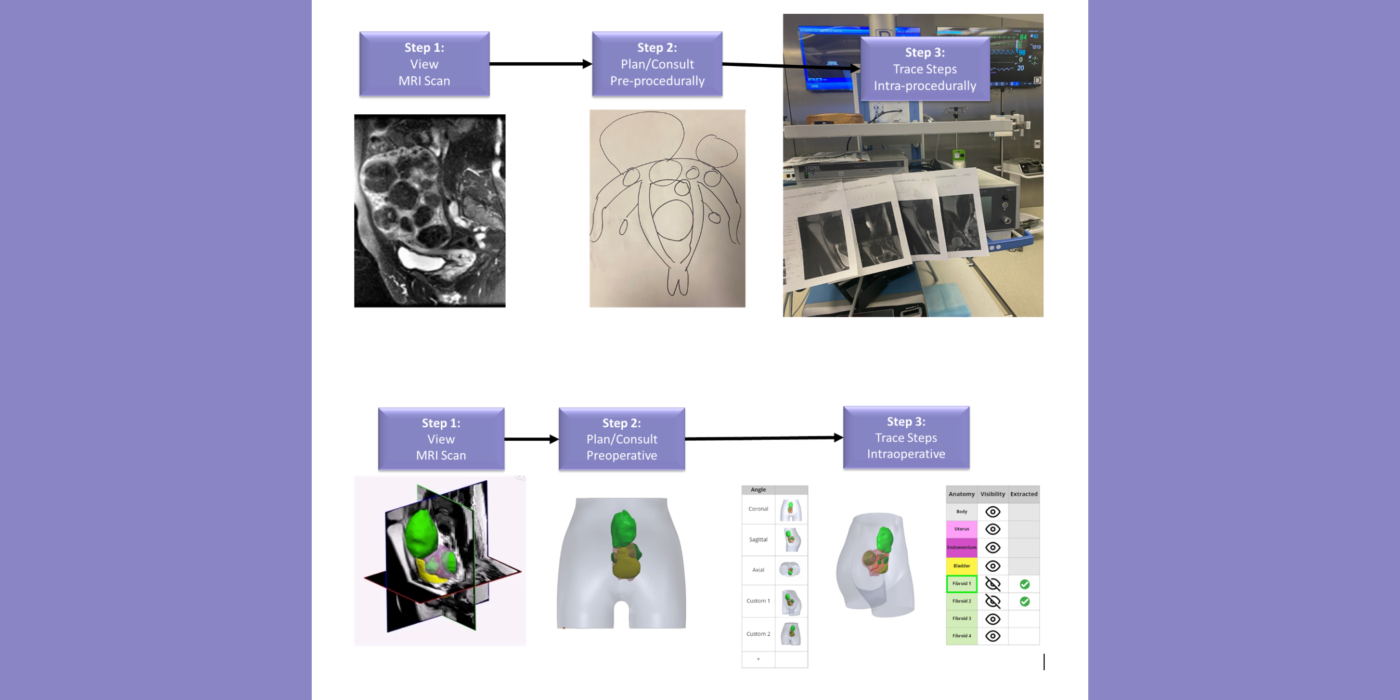
Workflows of today and tomorrow
(Top) Now: (1) 2D MRIs. (2) Advise on paper or 2D MRI. (3) Show fibroids on 2D screens/printing slices. (Bot): Next-Gen: (1) MRI auto-segmented deep learning. 3D scans in 2D. (2) Advise via 3D fibroids. (3) Guide via voice, interactive, mixed reality.
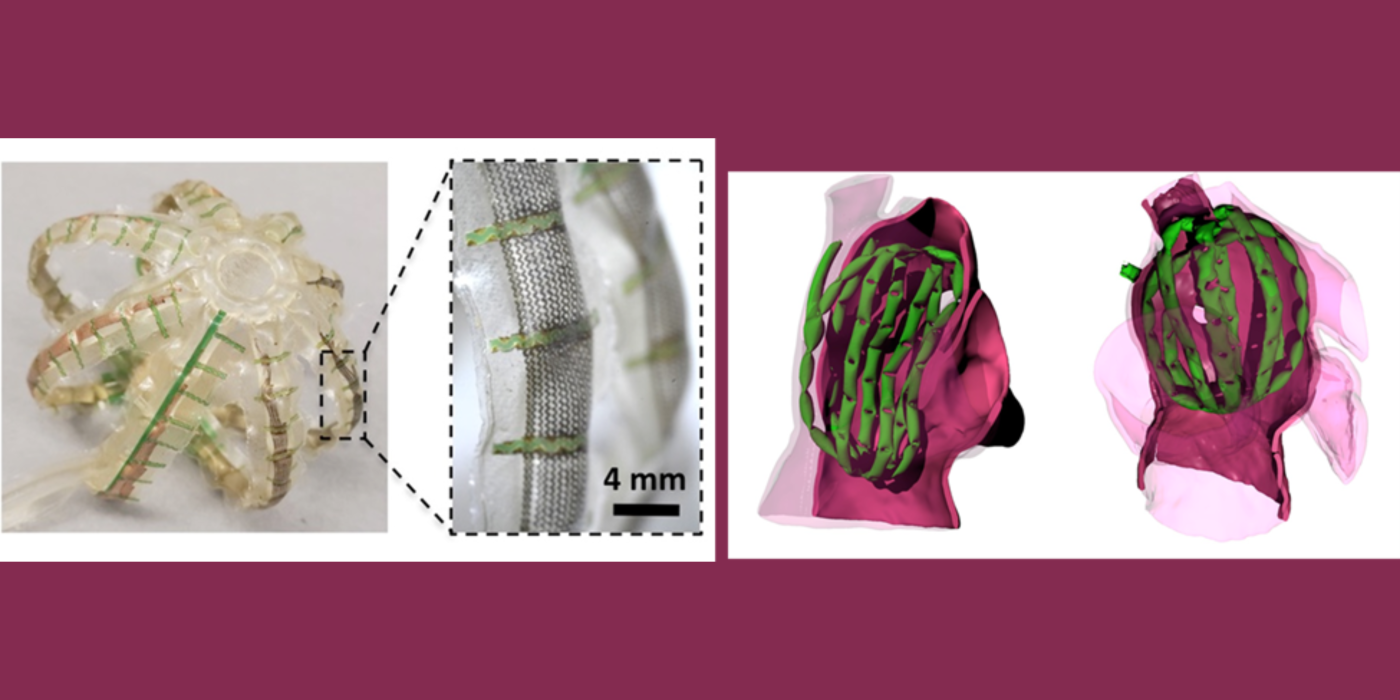
Soft robotic mapping catheter for atrial fibrillation
(L) Device with 128 electrodes linked to stretchable traces on 8 inflatable soft robotic polyurethan splines. (R) Computer- aided design files made from microCT images of device deployed to patient-specific 3D-printed models.
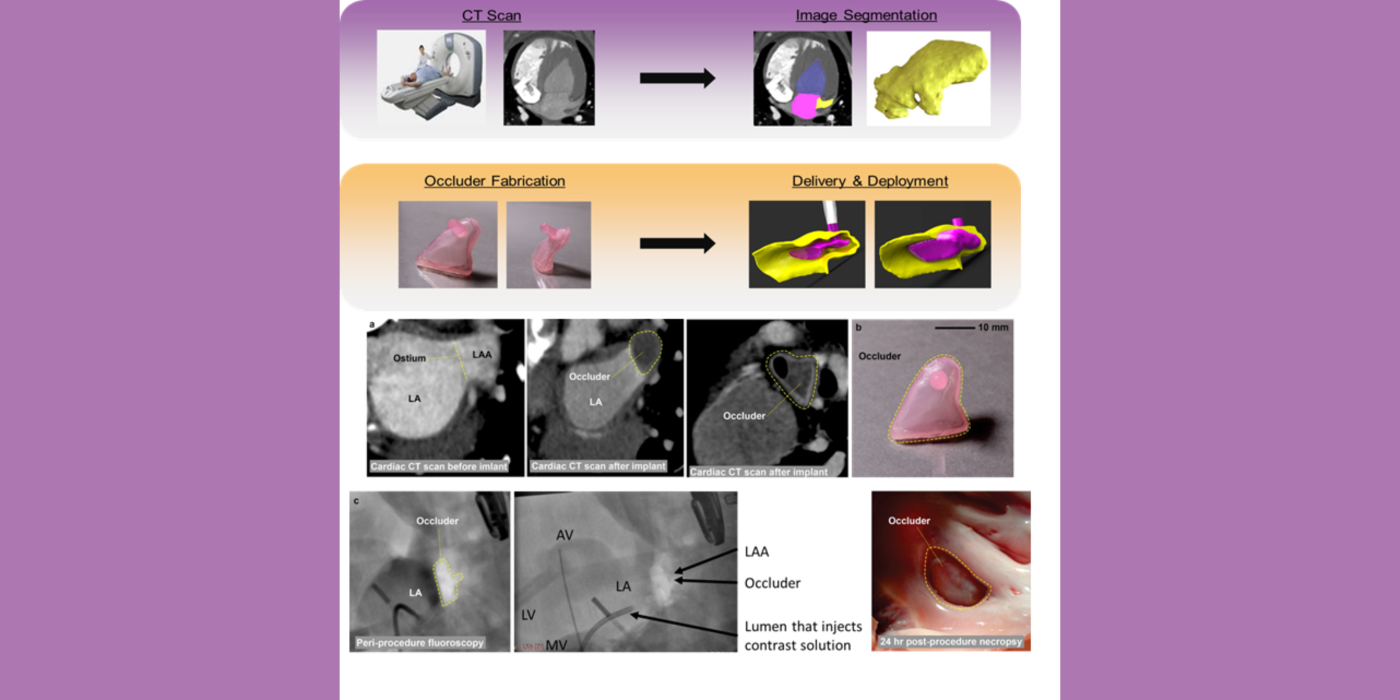
Patient-specific atrial appendage occluder
(Top 2 rows) Patient-specific occluder workflow. (Bot. 2 rows) Patient-specific occluder in large animal model.
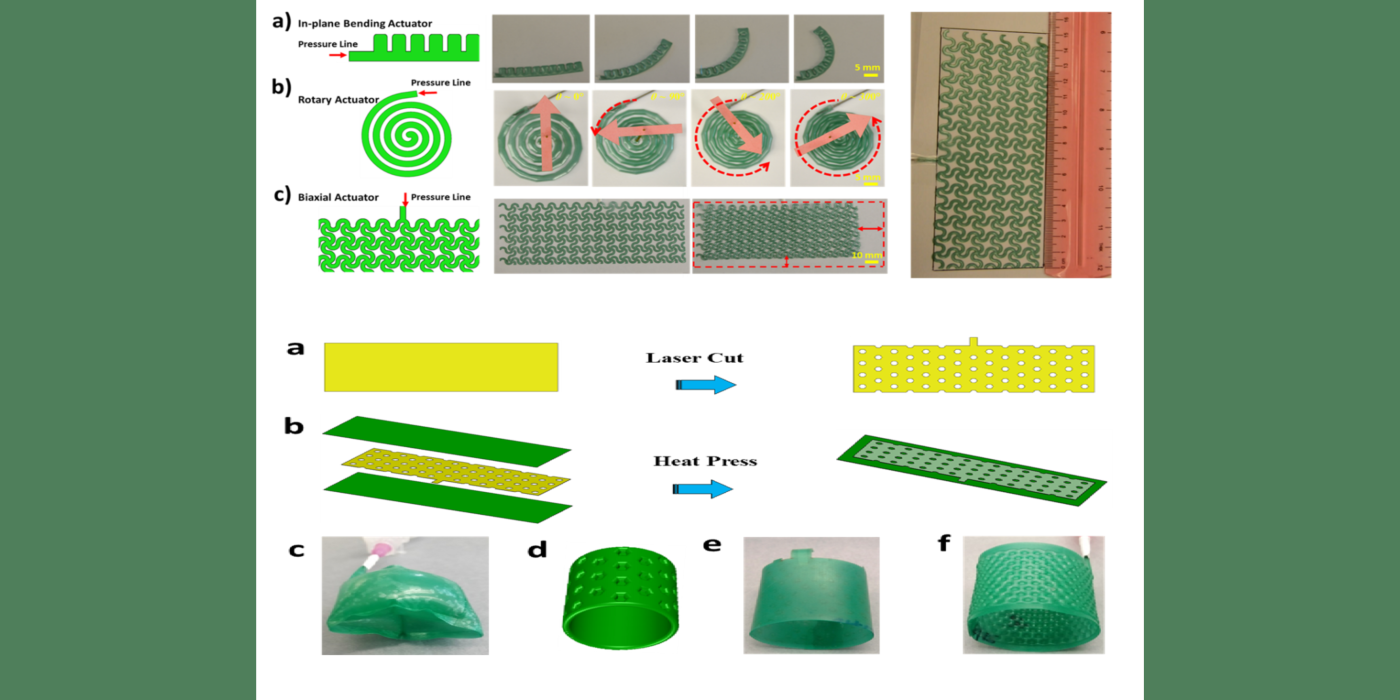
Soft robotic cardiac stents and actuators
(Top a-c) Thin soft actuators made from laser cutting layers of polyurethane sheets. (Bot. a-c) Soft robotic stents.
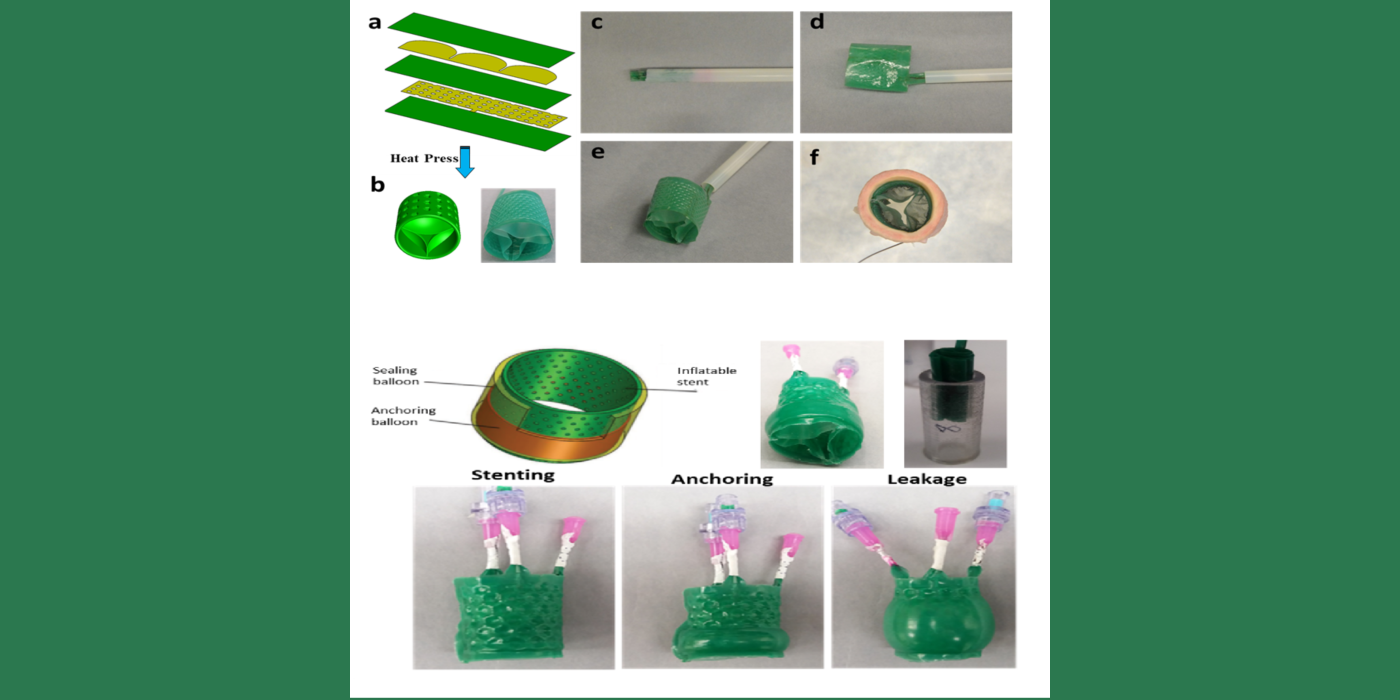
Soft robotic cardiac valves
Soft robotic aortic valve (AV). (Top) Soft robotic aortic valve. (Bot.) Soft robotic tricuspid valve.


